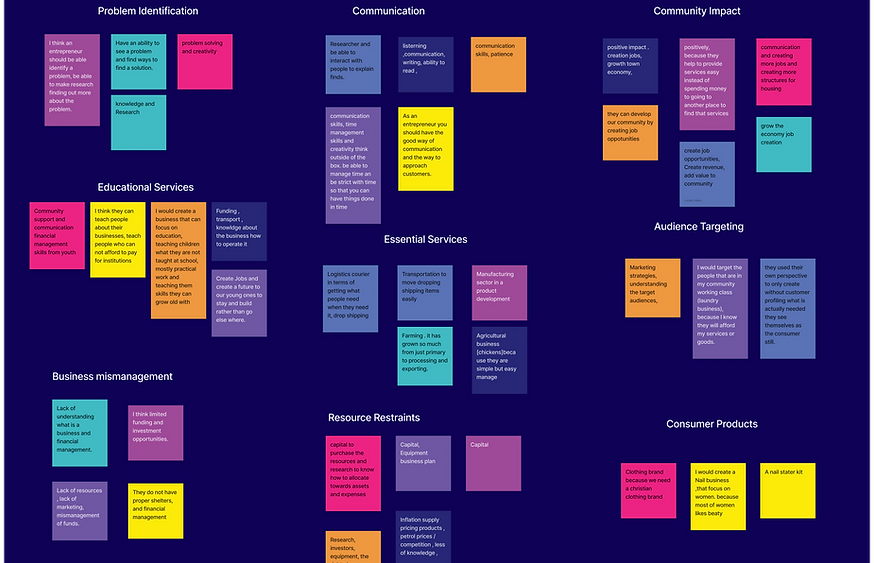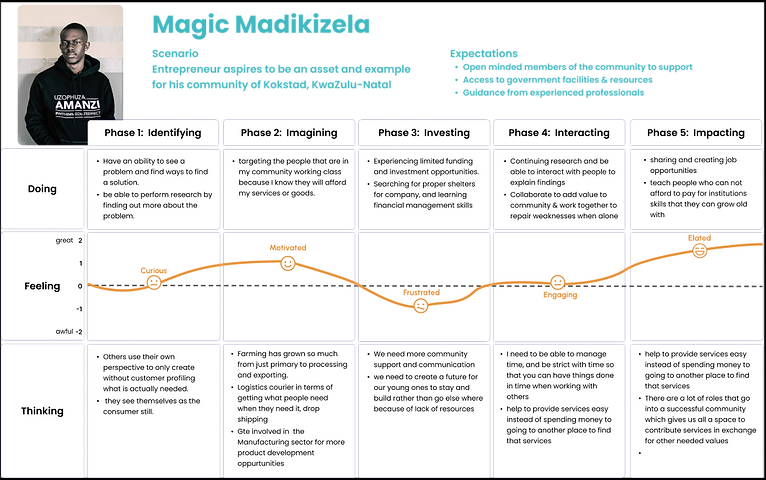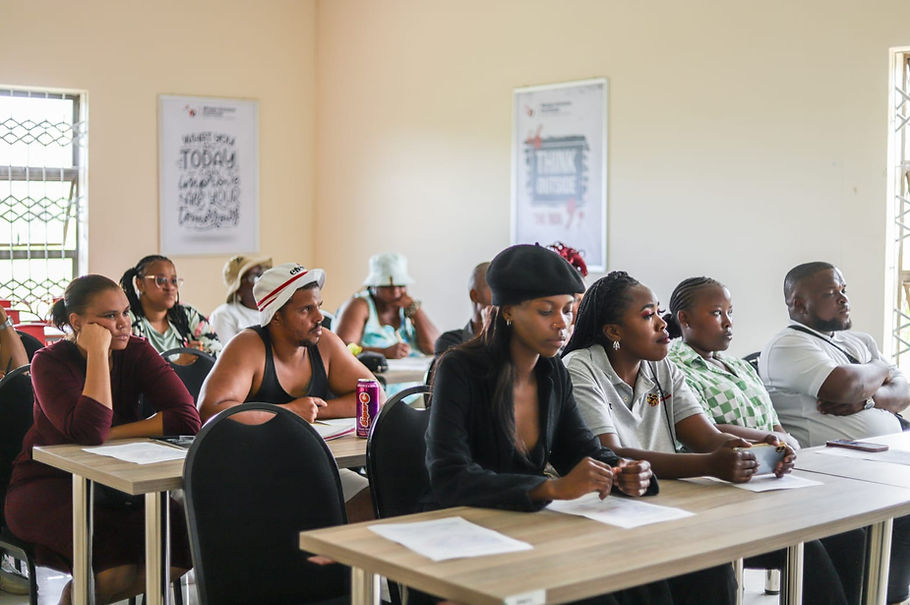Kokstad, KZN
Township Business Blueprint

Startup Spotlight

Kei Kei Motor Spares
Ndiphiwe Nondabula is the proud owner of Kei Kei Motor Spares, a 100% black-owned business in Kokstad. From humble beginnings, Ndiphiwe has built a thriving enterprise specializing in motor parts, earning a gross income of R2,367,007 in 2024. Despite significant challenges such as high operational costs and limited shop space, his determination and entrepreneurial spirit have made Kei Kei Motor Spares a cornerstone of Kokstad’s economy.
Immersed in Kokstad
The road from Durban to Kokstad was more than just a trip; it was a chance to step into a world driven by resilience and determination. Our mission—part of The Geleza Drive powered by Responsorble, in partnership with the Moses Kotane Research Institute and Geleza Mzansi—was to introduce the basics of research, design, and web development to a township ready to embrace the 4th Industrial Revolution. Kokstad, the hometown of Geleza Mzansi’s founder, was the ideal place to start, showcasing the potential that can be unlocked when a community is given the right tools. Arriving late at night, my business partner and I stayed in a small one-room shed, lit by candlelight. It held just a bed and a toilet, but it spoke volumes about the realities of life here. For me, coming from New Orleans, it wasn’t just a place to rest—it was a window into the daily challenges and resilience of the community we were here to serve. It reminded me that teaching starts with understanding, and understanding comes from seeing life through someone else’s eyes.
The next morning, we visited my business partner’s childhood home. His mother, a quiet but strong presence, was running a small business selling drinks. Her home wasn’t just a place to live—it was a hub where neighbors came to buy goods, share stories, and feel a sense of belonging. Watching her work, I saw how much trust and connection mattered in her success. She wasn’t just selling drinks; she was building relationships that kept her customers coming back. Breakfast was simple but special—amasi and phutu, jokingly called “traditional cornflakes” to make me feel at home. As we ate, I listened to conversations in Xhosa and isiZulu, even if I didn’t always understand the words. The tone was clear—warm, humorous, and full of resilience. It was in those moments that I gained a deeper respect for the strength and resourcefulness of this community.
Before heading to the digital center, we were tasked with helping my business partner’s mother restock supplies for her business. She could have used a delivery service, but she trusted her son to take care of it. This wasn’t just an errand—it was a reminder of how deeply family, work, and community are connected here. It mirrored the ideas we planned to teach in the workshop: that progress isn’t just about individual success but about lifting others up along the way. Kokstad showed me that a community’s greatest strength lies in its people. From the candlelit shed to the vibrant digital center, every experience reinforced that real progress comes from within. My role wasn’t to change this community—it was to amplify the potential that already existed. And Kokstad had so much to offer.
The Essence of Entreprenuers

The Kokstad Digital Centre stood out as a modern facility in a township with significant entrepreneurial potential but limited resources. With 20 computers and a classroom area, it offered the tools needed to help the community move toward greater economic participation. Upon arrival, the staff welcomed us and shared that the participants were ready to begin the Geleza Drive workshop. The session started with an introduction from my partner, who explained the global shift into the 4th Industrial Revolution, driven by AI and automation. He highlighted how centers like this could help bridge the gap, providing opportunities for communities still working to overcome earlier stages of industrialization.
We introduced the Responsorble curriculum, focusing on using research to identify community needs and create opportunities. To demonstrate, I conducted a live group interview using a Google Form, asking participants about their entrepreneurial journeys. This activity showed how research could uncover key insights about the community, even from an outsider's perspective. Using the collected data, we worked together to analyze the findings through harmony maps (a type of affinity map) to identify patterns and key themes. From this, we developed a connection statement to define the main challenges and opportunities and brainstormed solutions using how-might-we statements.
The participants highlighted recurring issues like the lack of accessible resources, the importance of understanding client needs, and the potential for local businesses to grow through better use of digital tools. This session showed how research could guide practical solutions, empowering participants to think critically about their challenges and how to address them with the resources available.


Phases of Progress
%201.png)
We created a journey map for aspiring entrepreneurs in Kokstad, outlining five phases: identifying problems, imagining solutions, investing in a potential service, interacting with the market, and making a community impact. This map highlighted the challenges and opportunities along the way, offering ideas for improving the process.Starting with problem identification, rather than jumping straight into creating a business, helped participants see the value of understanding community needs first. This approach energized them, showing how thoughtful planning leads to better solutions.
The investment phase revealed common frustrations, especially around limited resources and funding. This pointed to the need for collaboration—entrepreneurs pooling skills and resources to overcome barriers. The interaction phase expanded on this idea, encouraging partnerships to enhance offerings and share benefits.In the final phase, we imagined a network of entrepreneurs working together to create jobs and grow the local economy. This collective approach inspired participants to rethink their paths, leaving them with practical tools and a clearer vision for success through community-driven efforts.
A Community United

Rather than focusing on individual entrepreneurs, our research led us to view the Kokstad community as a whole. By analyzing insights from interviews, we developed a collective persona that reflected the community’s needs, goals, frustrations, and behaviors, emphasizing collaboration over individual effort. The Kokstad community holds great potential to thrive by empowering its network of aspiring entrepreneurs. These individuals aim to contribute to their society by offering essential services that are currently lacking locally, such as progressive education, financial access, and effective business management.
One of the biggest challenges lies in the limited resources and infrastructure needed to support these ambitions. However, the community’s resilience and collaborative mindset offer a solution. By adopting a barter system for exchanging skills and resources, entrepreneurs can overcome production challenges. This system can then evolve into a stokvel-style financial management structure, where pooled funds sustain and grow local businesses.
This approach addresses both immediate needs and long-term sustainability. It creates a foundation for group economic infrastructure that future generations can build on, reducing dependency on outside aid. Through shared effort and collective action, the Kokstad community can shape its path toward lasting economic prosperity. This community persona serves as a roadmap for the possibilities of working together to achieve greater success.
Collective Economics

BARTER SYSTEm for produCtion
The flow chart introduces a barter system during the production phase to address the challenge of limited financial resources. Entrepreneurs trade skills and services to support each other in developing and executing their business ideas, creating a network of mutual support. This system shifts the focus from individual ownership to collective collaboration, allowing participants to contribute to and benefit from multiple ventures. By leveraging shared talents and resources, this approach not only overcomes financial constraints but also expands the range of services available within Kokstad. It empowers the community to grow together while reducing reliance on external funding.
STOKVEL for ManagemenT
To sustain the businesses built through collaboration, the flow chart incorporates a stokvel model for managing finances. Once businesses start generating profit, a portion of the earnings is pooled into a shared fund. This decentralized system provides financial support to businesses facing challenges, ensuring they can stay operational. The stokvel also promotes collective growth by allowing entrepreneurs with financial expertise to guide and mentor others. This reinvestment strategy reinforces the community’s resilience, turning financial management into a shared responsibility. Together, these efforts lay the groundwork for long-term economic stability and growth in Kokstad.
A Full Circle Moment

Our mission in Kokstad began with the goal of empowering the community through research, collaboration, and design thinking. By immersing ourselves in the daily rhythms of the township and guiding participants in exploring entrepreneurial paths, we discovered the power of collective action. Using tools like harmony maps, connection statements, and journey mapping, we identified both the challenges and opportunities unique to Kokstad, shaping a vision for a community-led entrepreneurial ecosystem. The framework that emerged was grounded in bartering and shared financial responsibility, providing sustainable solutions to the limitations of local resources.
The journey culminated in a real-life demonstration of collaboration. After completing a successful workshop filled with feedback and requests for more, we faced a challenge of our own: sourcing supplies for my partner’s mother before the suppliers closed. With time running out, a local competitor stepped in, turning what could have been a business rivalry into a show of mutual support. We returned not only with the supplies but with a deeper understanding of the very spirit of community we had hoped to foster in the workshop.
That evening, as we celebrated with the locals, it became clear: Kokstad’s strength is found in its people’s resourcefulness and their willingness to work together. This experience highlighted the transformative power of collaboration and the idea that every challenge presents an opportunity to connect and grow.
